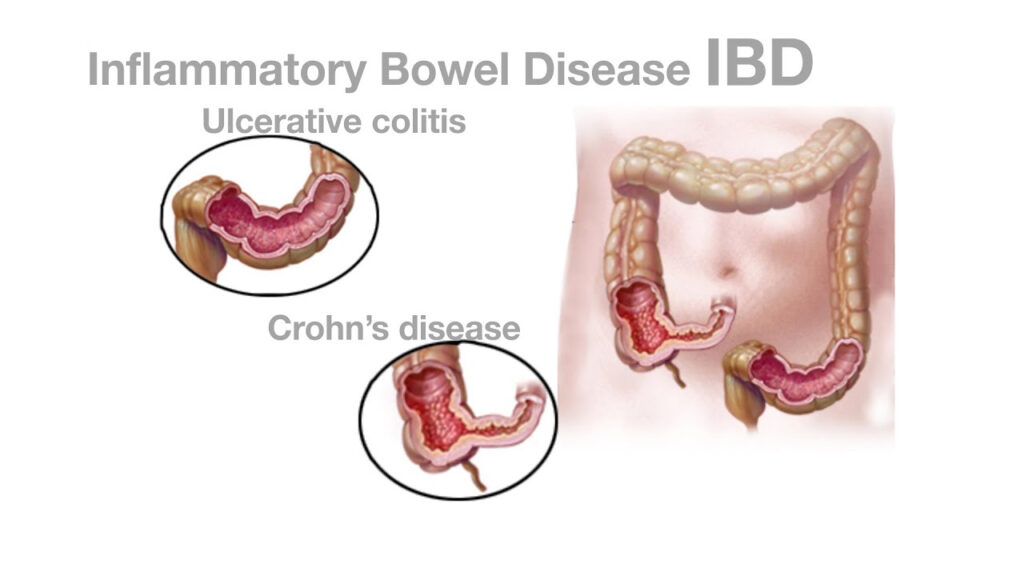Inflammatory Bowel Diseases IBDs, Crohn’s disease, and ulcerative colitis may all be at risk from long-term ingestion of the food dye Allura Red, according to Waliul Khan of McMaster University. According to studies using experimental animal models of Inflammatory bowel disease (IBD), prolonged exposure to Allura Red AC is bad for gut health and promotes inflammation.
The dye directly affects the function of the gut barrier and increases serotonin synthesis, an intestinal hormone/neurotransmitter that alters the makeup of the gut microbiota and increases the risk of colitis.
Foods that affect your Brain and reduce your intelligence | Benefits of Sunbathing in Winter
What is inflammatory bowel disease (IBD)?
Parts of the gut (bowel) that suffer from inflammatory bowel disease or IBD become inflamed and bloated (inflammation). As a chronic condition, it persists for a long time or recurs frequently.

IBD can be classified as either Crohn’s disease or ulcerative colitis. These illnesses share a lot in common, yet there are also some key differences:
From the mouth to the antrum, the gastrointestinal system can be affected by Crohn’s disease (where poop comes out). The entire gut wall is damaged by the Crohn’s disease inflammation.
Only the large intestine experiences ulcerative colitis (the colon). It damages the inner lining of the colon, causing sores known as ulcers.
Common Food Color Can Trigger Inflammatory Bowel Diseases
According to Khan, Allura Red, sometimes called FD&C Red 40 and Food Red 17, is a common additive in candy, soda, dairy products, and some cereals. Foods are regularly dyed and given texture to appeal to children.

Artificial food colours like Allura Red have become increasingly popular over the past few decades, but there hasn’t been much prior research on how these colours affect gut health. Khan and his group published the findings of their investigation in the journal Nature Communications. Yun Han (Eric) Kwon, a recent PhD graduate who works in Khan’s lab, is the first author.
This study shows that Allura Red has considerable negative impacts on gut health and pinpoints gut serotonin as a key mediator of these effects. These findings have significant implications for the prevention and treatment of gut inflammation, according to Khan, the senior author of the study and a professor in the Department of Pathology and Molecular Medicine as well as the institute’s principal investigator.
The researchers write, “What we found is shocking and troubling because this common synthetic food colour may be a dietary trigger for IBDs.” This study is a huge step forward in warning the public about the possible dangers of the food dyes we ingest every day, he said.
According to the research, Allura Red use may have an impact on immunological illnesses, behavioural issues, allergies, and attention deficit hyperactivity disorder in children.
Inflammatory bowel disease (IBD), according to Khan, are serious, long-lasting inflammatory disorders of the gut that impact millions of people all over the world. Studies have indicated that these disorders can be brought on by dysregulated immunological responses, genetic factors, gut microbiome imbalances, and environmental factors, yet the precise origins of these conditions are still not entirely known.
Identification of susceptibility genes and knowledge of the function of the immune system and host microbiota in the pathogenesis of IBDs have advanced significantly in recent years. According to him, similar developments in the definition of environmental risk factors have lagged.
The usual Western diet, which contains processed fats, red and processed meats, sugar, and a deficiency in fibre, according to Khan, is one environmental factor that causes IBDs. He continued by saying that a considerable number of different chemicals and colours are also present in processed foods and the Western diet.
The findings, he continued, “indicates a relationship between a widely used food dye and IBDs and calls for additional investigation of this relationship at experimental, epidemiological, and clinical levels.”

